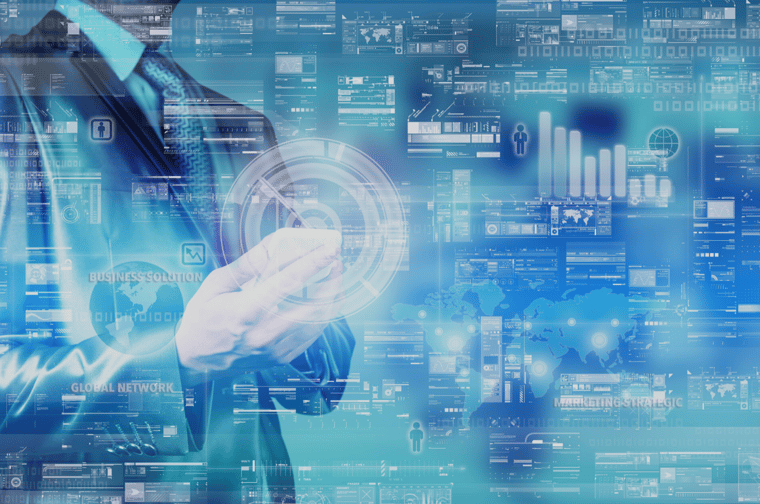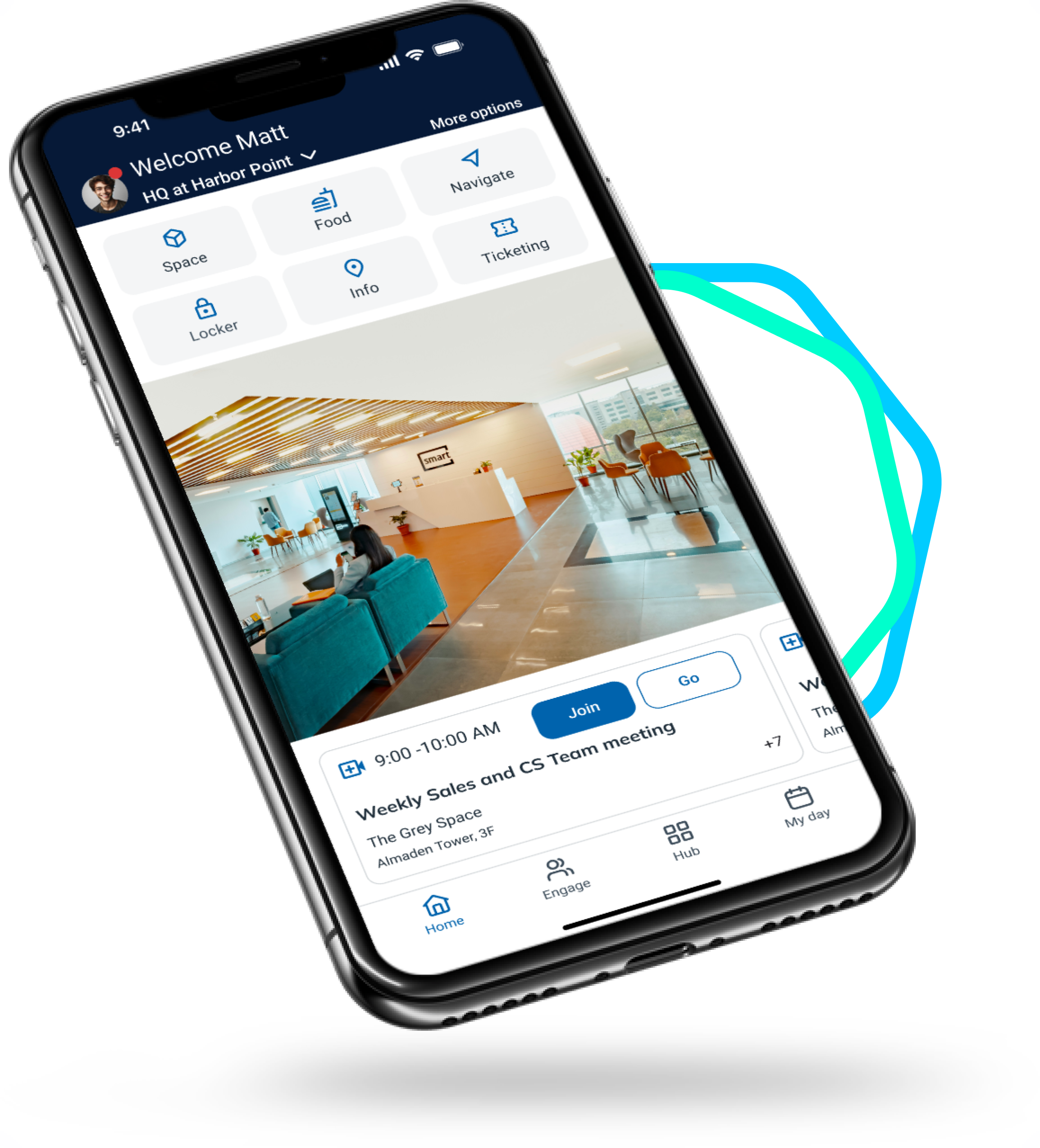The world has been irrevocably changed. There's no direct road back to conventional workplaces. But employees do want a return to normalcy and in-office collaboration, which calls for more contactless interactions and the environments to protect the workplace.
Being alone, cramped in a home office for hours or days on end may seem like the ideal work experience, especially these days, but most people will find that to be untrue. Humans are social, and we need collaboration and connection not just to be more productive, but also to maintain our mental and emotional health.
If and when huge corporate campuses do return, things are going to be remarkably different. Contactless interactions and experiences will rule the nest.
Contactless interactions are merely engagements, experiences, and social interactions that involve absolutely no contact with another human.
Over 62% of consumers expect to increase their use of touchless technologies even after the current crisis subsides.
There's no question it's going to spill over into the average workplace where workers will demand low-touch environments to make them feel safer in the office.
The Need For Low-Touch Experiences In the Office
Contactless environments, and what will be the future of the workplace, are all about creating a low touch environment or experience. The less we touch, the lower our exposure rate for contracting and spreading illness and disease. Most importantly, it keeps the entire environment much more sanitary and easier to maintain health and wellness in the workplace.
A truly contactless environment makes use of modern technology to facilitate day-to-day operations while minimizing the need for more devices or instruments. For example, merely tacking on new keys, fobs, or other wearables for employees to use might make things more distanced, sure, but they don't necessarily make the experience better. At work, 3 out of 4 people use keys, key cards or fobs, and 41% had keys either lost or stolen. A further 34% let someone borrow them, which is not just a poor security practice it opens the door to potential infections.
Requiring that employees use a bevy of different authentication and access devices might instead frustrate, cause bottlenecks, and make things more tedious, especially when the systems were not developed to adequately make use of what's available.
Consider this, 41% of office workers already use key cards to enter a workplace. Yet, the same people agree that smartphones or smartwatches would be their first choice of credentialed access.
To optimize these environments, it's vital to choose the right types of contactless interactions. Ultimately, it's about creating a culture of safety, through wireless connectivity. Everyone and everything in the workplace remains safe, clean, and ready-to-go.
The only way to make such a thing happen is to implement proactive and reactive technologies that mitigate future occurrences, while simultaneously improving the right now. In other words, no one should have to wait around for things to happen, they should be instant.
Remote access technologies are instrumental in achieving dynamic and real-time contactless interactions. Beacons, sensors, and AI designed to facilitate common interactions are just a few examples.
Imagine someone arriving on the worksite, receiving mobile alerts and updates on daily news or critical information before even entering the facility. For instance, contact tracing might have revealed who is potentially sick or infected. A beacon could detect and send out real-time alerts when someone is at risk, before, during, and after they arrive on a lot.
How Contactless Interactions Infiltrate the Workplace
These types of interactions and engagements help to streamline accessibility both in and around offices. Mobile is the obvious way, as nearly everyone already has a mobile device at the ready, at all times.
It creates a digital front door into the workplace, no matter where a person is located. They could be miles upon miles away, for instance, yet still, have direct access to workplace systems and tools.
Here are a few sample use cases to illustrate how employees can have touchless experiences at work
- Access Doors and Switches. Yes, you can use fobs and digital badges in this fashion to reduce points of friction for knobs, doors, and switches, but with a more wholistic approach to different use cases in the workplace, mobile technology can help with this too, keeping all use cases accessible from one control point.
- Book A Desk. With an increase in flexible workspaces and shared desks, the future of work will rely on technology to help control seats in the workplace. This means integrated technology that allows employees to reserve their desk or workstation for a given period of time without using shared touch systems or tools.
- Reserve A Conference Room. Similarly, employees can reserve conference rooms based on attributes that best suit their meeting or group needs, but do so without having to sign in on a digital pad or room sign. With a mobile app, they can swipe and/or use in-room beacons and sensor to effortlessly secure their desired conference room.
- Order Food. One thing many people will have top of mind is to avoid high traffic areas. This includes common spaces such as lobbies, gyms, and cafeterias. By providing an alternative to standing in line, using the cash register, exchanging money or goods, simple mobile food ordering keeps niche experiences low-touch.
- Exchange Information. Remember hand shakes? And business cards? Well, those are long gone. Instead, digital sharing of contact info and networking transactions will need to be done digitally too. Keep your bent business card to yourself, sir.
- Engage With Digital Content. A particularly good use cases for employees and even visitors to your campus includes interacting with digital content, signs, and physical exhibits in your space. Think about flipped through digital news, scanning the latest feeds, or even filtering through important company content using a mobile app as a controller to engage with a digital content wall or installation.
Bringing People Together - At A Safe Distance
A proper employee experience solution compiles everything that's needed to power, facilitate, and maintain contactless environments under one, convenient system. Mobile opportunities can put all use cases into one employee experience app, making things not just streamlined but so much easier for everyone involved.
Management, employees, customers, and partners alike can have direct communication and collaborative opportunities through a single space. Don't worry, employees and management have private interactions within the application.
Like many things, the benefits start with internal audiences — your employees — and that eventually expands to other channels, like a ripple effect, including stakeholders, customers, partners, vendors, and more.
It all contributes to and helps create a connected workplace that brings people back together, in safe spaces, to perform, interact, and engage the way we were meant to.

.png)

.png)







